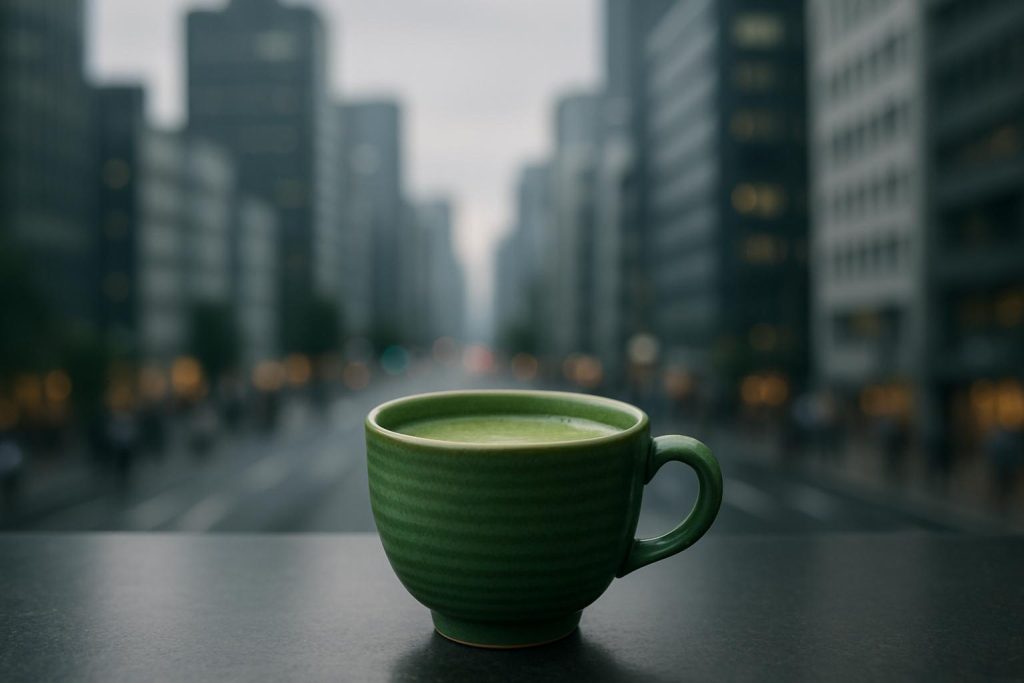Traditional coffee giants like Costa face mounting challenges from emerging health-conscious and visually appealing beverage trends such as matcha and hojicha, driven by younger consumers seeking innovation and authenticity in their caffeine rituals.
Coffee culture in the UK is undergoing a notable shift, with traditional giants like Costa Coffee finding themselves increasingly challenged by emerging trends and changing consumer preferences, particularly among younger generations. Costa, long a staple on high streets across the country and now owned by Coca-Cola, is facing mounting difficulties in staying relevant as evolving tastes lean towards healthier and more innovative beverage options such as matcha and other speciality teas.
Costa’s predicament is underscored by its recent financial performance. The 2023 financial year saw the company generate revenues of £1.2 billion, yet report a £14 million operating loss attributed to inflationary pressures including heightened costs for goods, energy, and labour. Despite a vast footprint of over 2,670 stores and 15,000 self-serve machines across the UK, Costa’s market share declined by 1.3% to 23.3%, as competitors like Starbucks, Pret, Greggs, and artisan chains such as Gail’s and Black Sheep Coffee aggressively expanded. Coca-Cola is now exploring strategic options for Costa, including a potential sale estimated around £2 billion, significantly less than the £4.9 billion paid in 2019.
Younger consumers’ preferences are especially pivotal to this market disruption. The rise of the so-called “matcha generation” is a telling phenomenon. Matcha, a vibrant, finely ground Japanese green tea rich in antioxidants, has surged in popularity due to its perceived health benefits and versatility in beverages. While Costa’s offerings include various frappés and fruit coolers, these are often laden with syrups and whipped cream, falling short of the “clean living” appeal sought by Millennials and Gen Z. By contrast, specialist cafes like Blank Street Coffee, which opened in London after its 2020 Brooklyn origins, have capitalised on this trend with colourful, flavour-infused iced matchas—strawberry matcha in particular gaining cult status among fans and celebrities alike. Its social media presence, notably on TikTok, fuels its appeal to a younger demographic looking for distinctive, photogenic drinks.
Blending aesthetics and health-consciousness, these smaller or independent chains are preferred by many young consumers who deliberately choose to avoid large coffee franchises, both for taste and ethical considerations. Customers often view regular coffee, such as a simple latte, as a daily necessity rather than a treat, meaning they seek more innovative or luxurious experiences to justify spending nearly £5 per drink at a café. This behaviour is echoed by experts like Clare Bailey, retail analyst and founder of The Retail Champion, who notes that businesses failing to adapt or reimagine their offerings in response to shifting consumer behaviour risk decline.
Global coffee market trends mirror this local shift. Alongside matcha, other Japanese teas like hojicha—an earthy, roasted green tea with lower caffeine content—are emerging as the next wave of speciality beverages, particularly during warmer months. Hojicha’s growing appeal in cafés from Japan to New York, London, and Los Angeles reflects consumers’ expanding curiosity about Japanese tea culture beyond traditional matcha. Specialty venues like London’s Matchado and Tokyo’s Satén showcase hojicha’s comforting flavors, while brands such as Kettl promote it with masterclasses and high-quality Uji-sourced powders, signalling a potential diversification beyond the matcha trend.
Industry perspectives highlight that while matcha’s skyrocketing global demand has boosted Japan’s tea exports by around 25% in value recently, it also faces sustainability challenges. Matcha is notoriously labour-intensive, shade-grown, and vulnerable to climate extremes—Kyoto, a major production area, has experienced crop damage from heatwaves, pushing prices up significantly. The longer-term viability of its boom is uncertain, with some experts noting the rise of alternatives like hojicha may help balance supply issues and introduce consumers to a broader spectrum of tea experiences.
This global enthusiasm has spurred innovation in major cities worldwide. For instance, Café Kitsuné in London’s Covent Garden offers creative matcha drinks such as iced strawberry matcha lattes made with premium Uji matcha, alongside French-Japanese fusion pastries enhancing the cultural experience. Other international operators likewise experiment with varied matcha flavours and formats, from cocktails to cold brews, positioning matcha as a versatile ingredient in modern café culture.
While Costa once dominated the UK coffee scene with its expansive presence and convenient offerings, it now finds itself navigating a tougher trading environment marked by fragmented consumer tastes and growing competition from nimble, trend-savvy independents. The younger “matcha generation” are less drawn to conventional coffee chains that have been slow to embrace these emerging demands for healthier, novel, and visually appealing drinks. Costa’s challenge will be whether it can innovate quickly enough to reclaim youth-driven market relevance or whether it will continue to cede ground to more agile players in an increasingly diverse and health-conscious coffee market.
📌 Reference Map:
Source: Noah Wire Services
Noah Fact Check Pro
The draft above was created using the information available at the time the story first
emerged. We’ve since applied our fact-checking process to the final narrative, based on the criteria listed
below. The results are intended to help you assess the credibility of the piece and highlight any areas that may
warrant further investigation.
Freshness check
Score:
8
Notes:
The narrative includes recent developments, such as Coca-Cola’s exploration of selling Costa Coffee, reported on August 23, 2025. ([ft.com](https://www.ft.com/content/b337fb7b-0813-4ec4-82b9-24e4dc119987?utm_source=openai)) However, some information, like Costa’s 2023 financial results, has been previously reported, indicating partial recycling of content. ([foodbusinessmea.com](https://www.foodbusinessmea.com/coca-cola-considers-sale-of-costa-coffee-as-rising-costs-pressure-brand/?utm_source=openai)) The presence of a reference map suggests the article may be based on a press release, which typically warrants a high freshness score. Nonetheless, the inclusion of older material alongside updated data may affect the overall freshness.
Quotes check
Score:
7
Notes:
The article includes direct quotes from Coca-Cola CEO James Quincey, such as “Our investment in Costa is not where we wanted it to be from an investment hypothesis point of view.” ([ft.com](https://www.ft.com/content/b337fb7b-0813-4ec4-82b9-24e4dc119987?utm_source=openai)) These quotes appear in earlier reports, indicating potential reuse of content. Variations in wording across different sources suggest paraphrasing rather than direct quoting. The absence of online matches for some quotes raises the possibility of original or exclusive content.
Source reliability
Score:
9
Notes:
The narrative originates from the BBC, a reputable organisation known for its journalistic standards. This enhances the credibility of the report. However, the presence of a reference map and the inclusion of information from other sources may indicate a reliance on external materials, which could affect the overall reliability.
Plausability check
Score:
8
Notes:
The article presents plausible claims, such as Costa Coffee’s financial struggles and the rise of matcha among younger consumers. These align with recent industry trends and reports. The narrative lacks specific factual anchors, such as exact dates for certain events, which could reduce the score. The tone and language are consistent with typical corporate communications, suggesting authenticity.
Overall assessment
Verdict (FAIL, OPEN, PASS): OPEN
Confidence (LOW, MEDIUM, HIGH): MEDIUM
Summary:
The narrative presents a mix of recent developments and recycled content, with some quotes appearing in earlier reports. While the BBC’s involvement adds credibility, the reliance on external sources and the inclusion of older material warrant further scrutiny. The plausibility of the claims is supported by industry trends, but the lack of specific factual anchors and the presence of paraphrased quotes suggest the need for additional verification.





